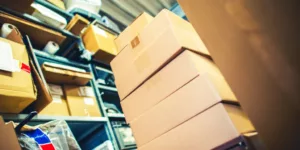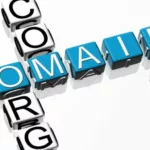What is digital packaging? Like digital marketing, digital packaging encompasses many different practices and technologies that have cumulatively revolutionized how businesses get things done. Packaging design, printing, mailing, and even reusing or recycling can now be executed using digital systems. The rise of ecommerce is aiding digital packaging’s meteoric growth. Research and Markets predicts that the global digital packaging and labeling market will experience a CAGR of 16% between 2016 and 2022.
Digital packaging is responsible for the many creative and colorful unboxing experiences that help brands boost customer engagement and gain social media exposure. Both effects alone make digital packaging a worthwhile investment for small businesses, but that’s not where digital packaging’s advantages stop. When small companies choose digital packaging, they’re investing in a host of other benefits.
Speed and Cost
Digital and offset printing each have unique advantages and disadvantages. But for small businesses, digital printing is typically the right choice for packaging. Why? Offset printing requires creating a custom plate, a custom die-cut for the box shape, and proofing them for each new design; this first stage is often the most expensive part of the print run. For large companies who need thousands of copies of the same print, this can be cost-effective–but for small companies who only need (and only want to pay for) a few hundred copies, offset printing is too costly per copy to be feasible.
Digital printing works directly from a digital file, which significantly decreases the difference in cost per copy between large and small orders. Digital printing can offer a substantially quicker turnaround because of more straightforward template creation and a shorter preparing and proofing process. A host of other advantages come with digital printing speed and cost-effectiveness. Businesses can minimize overstock storage while changing their packaging quickly to reflect seasons, trends, events, and different customer types.
Personalization and Customization
The consumer journey is more personalized than ever before. AI algorithms can predict what consumers will watch or buy online before they even log on, a trend that’s reshaping the entire retail and ecommerce industry with an eye towards personalization. Personalization helps brands tailor their offerings to customer needs, but customization also helps with something more ephemeral but no less vital: emotional engagement. Personalization can help brands communicate that customers aren’t just a number to them, building genuine brand loyalty in a consumer pool increasingly bombarded with irrelevant marketing information. A host of statistics back up the importance of personalization–McKinsey, for example, found that customization reduces acquisition costs as much as 50%, increases revenue 5-15%, and increases marketing efficiency by 10-30%.
Personalization can help packaging shine. Coca-Cola increased their sales for the first time in a decade through their “Share a Coke” campaign, which featured hundreds of names printed on Coke bottles across the country. Digital packaging can even help small brands unlock the power of personalization. In non-digital packaging, every change to a package design requires new plates, new proofs, and other resource-intensive steps. In digital packaging, customization is low-stress because the printing file merely needs a quick alteration.
Sustainability
Consumers are placing a higher and higher premium on sustainability. Three in four customers would pay more for sustainable packaging–and brands are responding. For many of those brands, digital packaging will turn out to be the greener choice. Because digital printing is cost-effective for small runs, it’s far easier for businesses to order only what they need. Package services such as BoxUp use digital printing to offer custom packages with no minimum order total. The result is far less waste at every step of the packaging creation process. For example, Hewlett Packard’s analysis of their own Indigo 20000 digital printer concluded that it produced less global warming potential and ozone damage while requiring less water and energy than non-digital CI Flexo and Gravure processes.
Many innovative brands are showing how digital packaging can improve sustainability beyond choosing digital over analog printing. Packaging company Returnity designs reusable shipping boxes for a wide range of ecommerce stores. These boxes can be sent out and returned using digital packaging systems, much like the ones that help ecommerce stores handle order tracking and return issues for disposable packaging. Digital packaging can handle other sustainability concerns as well; for example, RFID tags incorporated into packaging design are helping food shippers and retailers minimize food waste.
As technology evolves and the typical consumer’s world becomes more and more digital, companies will have to grow as well to keep a competitive advantage. Small businesses must continuously stay on the lookout for tools to help them out-maneuver large corporations. Digital packaging is one of those tools, unlocking speed, affordability, and unique customer engagement.








